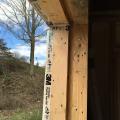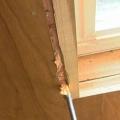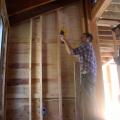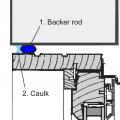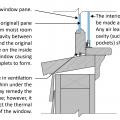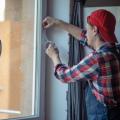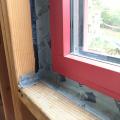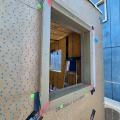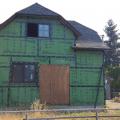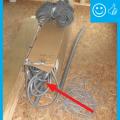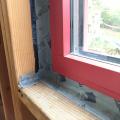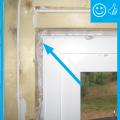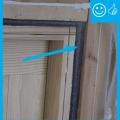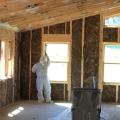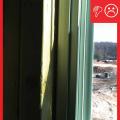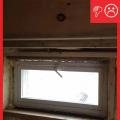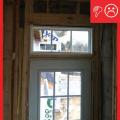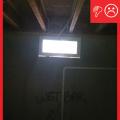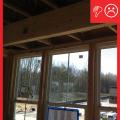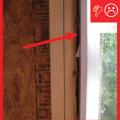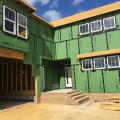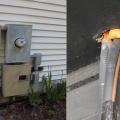Showing results 1 - 36 of 36
A piece of siding is used as sill extension and to provide slope in the opening for the window, which is deeper because exterior rigid foam has been added
An energy rater will check for dry rot and moisture problems as well as air leakage around windows and doors.
Builders use an infrared camera to “see” heat flow and air leakage around a window during construction.
Closed-cell backer rod is installed for air-sealing window and door rough openings.
Condensation in storm windows can be prevented by air sealing around the storm window and allowing some ventilation to the outside from the original window
Right - Corners of window are protected with draining house wrap that laps onto the sides of the window trim, paint-on flashing at window trim corners, and self-adhered flashing to reinforce corners.
Right - New flashing has been installed to complete the air and water control layers at the window openings of this wall retrofit that includes insulating the wall cavities with spray foam
Right - Seams in coated sheathing and joints around window are properly sealed and flashed with tape and all nail holes are covered with paint-on sealant.
Right – Backer-rod is a foam product available in various diameters that can be used to air-seal openings around doors and windows.
Right – Interior wood-to-wood seams around a window are sealed with tape to prevent air leakage.
Right – The rough opening around the window has been filled with low-expansion foam to air seal.
Right – The rough opening around window has been filled with backer-rod to air seal.
The rough opening around this window is air sealed and insulated with nonexpanding spray foam.
Wrong - This IR image is showing a lack of air-sealing is allowing cold air to enter the home around the windows and at the base of the wall.
Wrong – Fibrous insulation is not an air barrier and cannot be used to air-seal openings.
Wrong – the sheathing tape is properly installed to cover all seams in the coated sheathing but the flexible sill flashing product is not consistently installed or fully adhered around the window sills and is missing or lapped at some corners.
Wrong – This electric wiring hole was filled with foam that is not protected with copper mesh or hardware cloth so rodents could chew through the foam and enter the house (see Solution Center Guide "Reduce Pest Intrusion").


